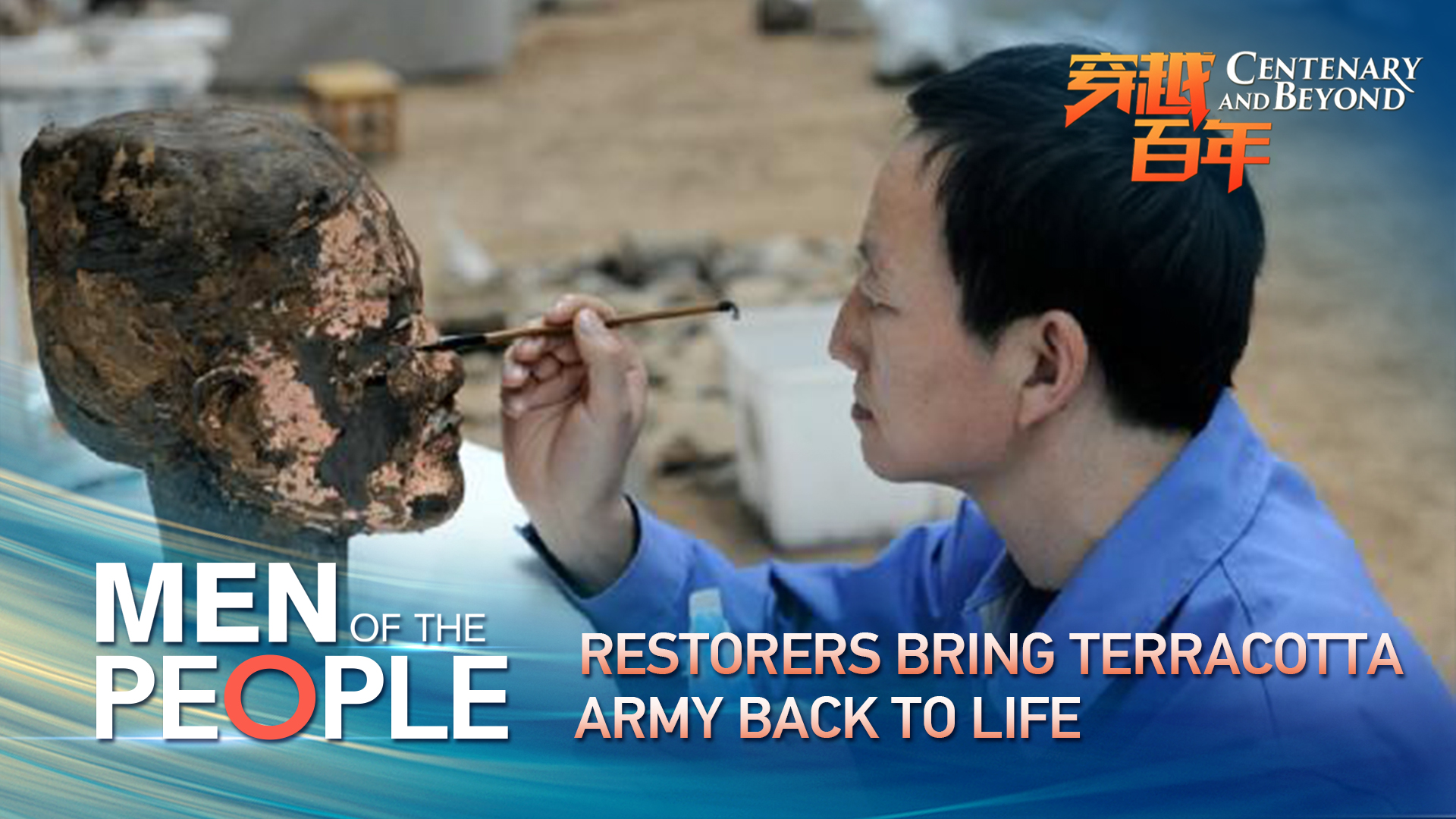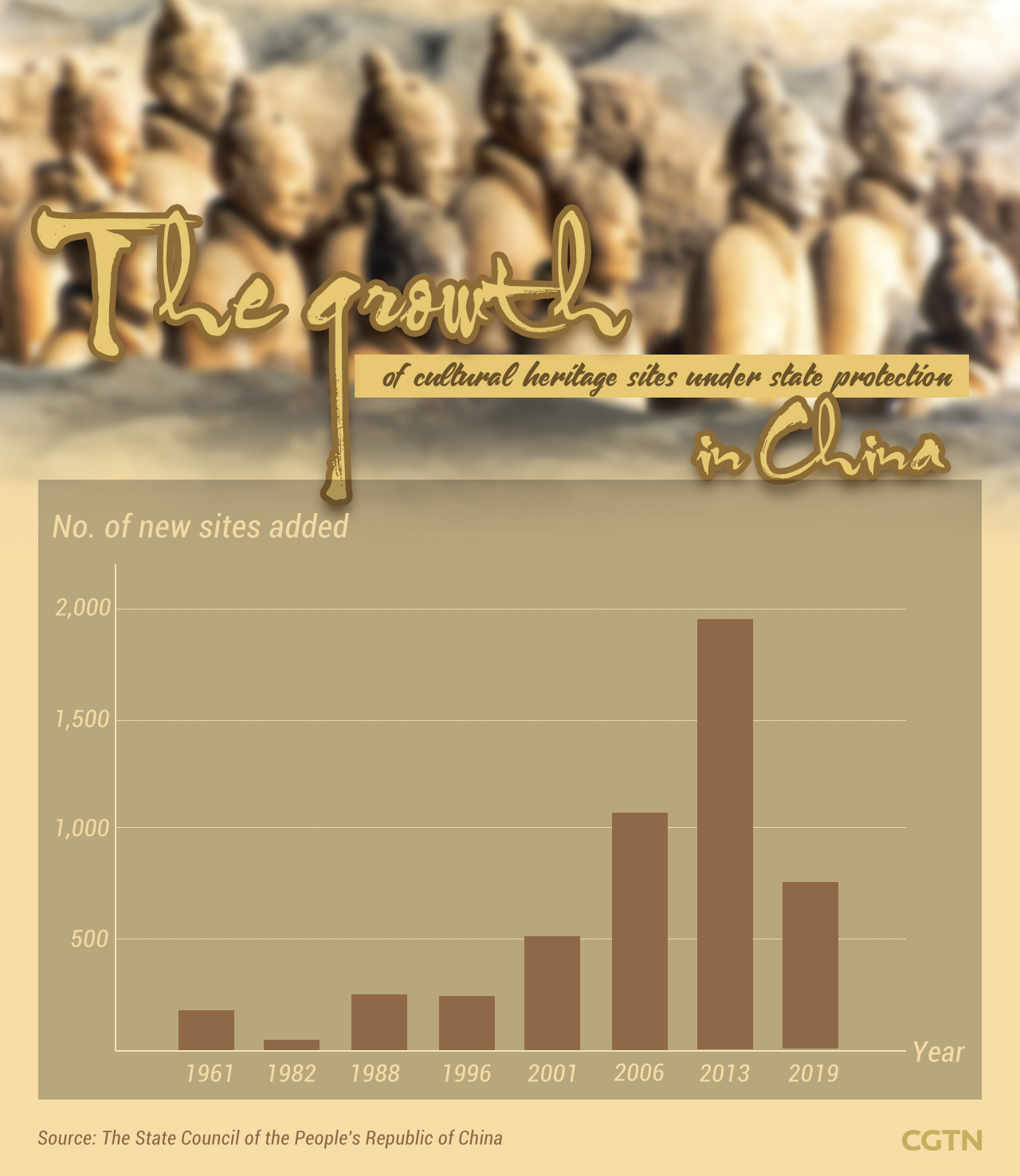06:11

Editor's note: This is a series of stories depicting how members of the Communist Party of China devote their time and energy to help protect the country's historical and cultural relics, ensure basic health care for people at the grassroots level, enable impoverished areas to shake off poverty and enhance technological and economic development to benefit people in need.
Behind the amazing lifelike Terracotta Warriors, described as "the eighth wonder of the world" by former French President Jacques Chirac after his visit in 1978, there is a group of experts working to keep the precious more than 2,000-year-old historical relics in good condition.
Lan Desheng, 52, is among the dozens of experts and technicians on the restoration team at the Emperor Qinshihuang's Mausoleum Site Museum in Xi'an, northwest China's Shaanxi Province.
"The process of restoring Terracotta Warriors is very similar to doctors treating patients," said Lan, who has spent 25 years piecing together and repairing more than 150 figures of the Terracotta Army, which was discovered at the mausoleum in March 1974.
Lan said most of the Terracotta Warriors showed signs of decay after being buried for thousands of years, which is made worse by oxidization after they are excavated.
The broken pieces, whose weight ranges from dozens to hundreds of kilograms, made the restoration both time and labor-consuming.
For Lan, the most time-consuming project was the restoration of a general, which took his team more than two years. The heavy pieces gave some members of this team aches and pains.
Even so, Lan feels satisfied with his job. "I hope that by restoring them, we are able to uncover historical facts and revive the Qin Dynasty (221-206 BC)'s culture and civilization."

Listed as a UNESCO World Heritage Site in 1987, the museum was also listed among the State Council's first batch of 180 cultural heritage sites under state protection in 1961.
The second batch of sites of the kind was announced in 1982, with 62 sites newly added. Today, there are 5,058 cultural heritage sites under state protection around the country, with the eighth and newest batch of sites announced in 2019.
The fast growth in cultural heritage sites not only shows China is a country with rich history and culture but also the Chinese government's commitment to heritage preservation and protection.
At the same time, the country has also enhanced its efforts to cultivate talents on cultural relics protection.
On October 19, 2021, China published its first State-level working skills standard for cultural relics restoration to normalize its management and boost its high-quality development.
"The restorers, who are in close and direct contact with these rare and delicate relics, should have sound theoretical knowledge and practical experience. Their operation will have a direct effect on the safety of the relics," said Gu Yucai, deputy director of the National Cultural Heritage Administration.

